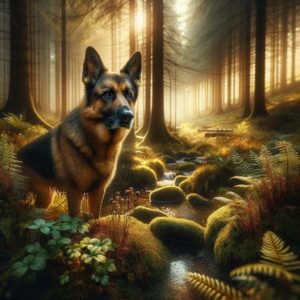Imagine a grand symphonic performance where each musician plays at their unique tempo. A flute trills quickly, a drum beats steadily, and a cello draws out its deep, resonant notes. This is nature’s grand orchestra, and each animal—from the fluttering hummingbird to the slow-moving elephant—plays its part. The tempo? It’s set by the metabolic clock. Let’s explore why this clock ticks faster for some and slower for others, and what it means for the little and large companions in our lives.
Chapter 4: The Decrescendo: The Graceful Slowing Down in the Animal Kingdom
The Poetry of Decrescendo—A Softer Melody in the Music of Life
If life is a symphony, then aging is its decrescendo—a gradual softening of the music, a tempering of the fervor that once was. Just as every crescendo inevitably leads to a quieter note, so does the metabolic frenzy of youth give way to the more measured rhythms of age. Whether it’s the rapid decrescendo of a mouse or the elongated, graceful slowing of an elephant, each phase has its own unique beauty, its own distinct cadence.
The First Hints: Subtle Changes in Behavior and Appearance
As the decrescendo begins, the first subtle changes make their appearance. Maybe it’s a slower gait, a little less enthusiasm for the daily walk, or perhaps a few graying hairs around the muzzle. These aren’t signs of decline but rather gentle markers of a new phase, the start of a different kind of melody.
The Andante: A Moderate Tempo for New Explorations
While youth is often a rapid allegro or a frenetic presto, age brings with it an “andante”—a moderate, walking pace that’s perfect for explorations of a different kind. Older pets may not chase after balls with the same zest, but their slower, more deliberate movements often reflect a different type of interaction with the world—one that’s equally enriching.
The Molto Ritardando: The Art of Taking One’s Time
In the language of music, “molto ritardando” signals a significant slowing down, and in the life of older animals, this slowing is an art form. It’s the leisurely sniffing of a flower, the extended basking in a patch of sunlight, or the long, satisfying stretch after a nap. In these moments, we find a unique form of joy, a contentment that comes from taking one’s time.
The Diminished Vibrato: The Quieter Vocalizations of Age
You might notice that the barks and meows aren’t as loud as they used to be, or perhaps they carry a different tone—a more subdued expression, but no less meaningful. This is the diminished vibrato of the decrescendo, a quieter but equally poignant form of communication that tells its own story.
The Solo Passages: Moments of Reflection and Solitude
In a decrescendo, there are often solo passages—moments where a single instrument takes the lead, offering a softer, more introspective melody. Older animals, too, seek moments of solitude and reflection, whether it’s a cat quietly gazing out of the window or a dog taking a solitary walk around the yard.
The Extended Adagio: The Long, Graceful Slowing Down in Larger Animals
For larger animals like elephants and whales, the decrescendo is not a brief episode but an extended adagio—a long, sustained slowing down that can last for years, even decades. This prolonged phase allows for deep relationships, intricate social structures, and a wisdom that only comes with time.
The Final Cadence: Acceptance and Celebration of the Inevitable
As the decrescendo draws to its close, there’s an acceptance, a quiet celebration of the cycle of life. It’s not a mournful end but rather a peaceful resolution, a final cadence that brings the symphony to a satisfying conclusion.
The Last Note—A Salute to the Beauty of Life’s Decrescendos
And so, as the last note of the decrescendo rings out, we find ourselves immersed in a profound sense of awe and gratitude. The graceful slowing down in animals is not just an end but also a summing up—a final, beautiful expression of all the preceding movements. In this decrescendo, we find not just the reality of aging, but the poetry of life itself, reminding us to appreciate each phase for the unique melody it brings to the grand symphony of existence.








